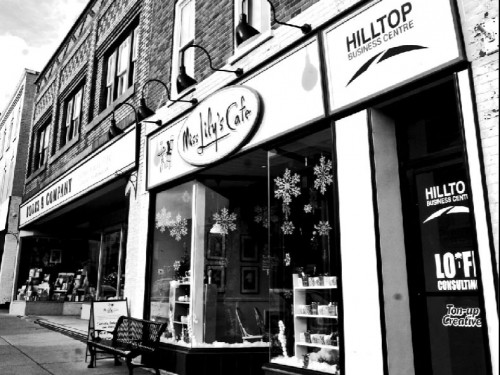County News
A sense of place


A study of downtown Picton may lead to the County’s first-ever heritage conservation district, protecting a whole area rather than just a single building.
The County is recognizing and conserving heritage—by the neighbourhood
Astudy, being conducted by the County’s planning department with the help of consultant architecture group ERA, is currently underway in Picton. The goal is to find out how and where to designate a heritage conservation district.
The study is the first of its kind in the County, but a heritage district is not a new concept. It is set out in the fifth part of the Ontario Heritage Act, enacted in 1975, as a way for municipalities to control and conserve areas that are determined to be of cultural interest and importance. Similar to a standard heritage designation, a district would comprise an entire, border-defined area that is designated and protected.
The first heritage district to be designated was Meadowvale Village, in Mississauga, in 1980. Since then more than 100 heritage districts have been designated all over Ontario, and it’s estimated that number will double in the next five years.
This is in part because of a study that came out of the University of Waterloo’s Heritage Resource Centre, touting the virtues of a designation. It protects the assets that bring in cash from tourists, residents and new businesses. It brings up property values. And it gives a municipality reason to boast— drawing tourism to an area that is unique with local historical and architectural landmarks.
In the County this may have seemed unnecessary for a long time. The pristine heritage, untouched by industrialization after the fall of the canning industry here, was the major draw, and buildings and neighbourhoods were protected more by a lack of need to change than a bylaw.
Now however, the destruction of the Pentecostal Church in Picton last year, and the demolition of several properties to install a still-absent Shopper’s Drug Mart, have helped shape a new council receptive to investing in heritage. A heritage conservation strategy presented during the February 2011 budget meetings set the wheels in motion.
The area of the study, led by County planner Damien Schaefer, spans from Bridge Street up to Macaulay House, and from Loyalist Parkway to the Claramount. The different potential districts, and there could be more than one, include the downtown strip and the harbour. Public consultations will be held in 2012 to determine support.
Past that phase, says Shaefer, it’s hard to say exactly how long it would take before a heritage district is designated, but he expects it to be a couple of years.
ERA Architects is a company specialized in heritage preservation, and included on its resume of historical districts is Toronto’s Brickworks.
According to Cobourg city planner Stephen Ashton, who visited the County last year along with Kingston’s heritage planner Marcus Letourneau, as long as the residents and businesses are on board, there is no downside to the designation.
Ashton said that a place can get blindsided its by growing popularity, and lose those landmarks that made it popular to begin with in the name of infrastructure and growth.
“It reflects the community values of what an area should look like, what new buildings are going to look like, what buildings are going to be saved,” said Ashton. “If the community is behind a heritage district then there really isn’t a downside—if there are good guidelines, and there is an objectivity of how those guidelines are applied.”
The guidelines to each heritage district vary, and decisions to conserve certain aspects of a district live and die, for the most part, with the municipal council. That means nothing is set in stone, alterations are possible, and in a well-planned district, residents and businesses are often satisfied with the results of a designation.
In a roundtable discussion that took place on November 10, 2010, County staff warned against Picton- and Wellington-centric projects, saying money and resources given to heritage conservations should be spread around. But creating a heritage conservation district in Picton is one of the most resource-heavy goals in the document presented to council for the 2011 budget, estimated at a cost of up to $100,000 to carry out.
“It’s hard to imagine that the historic downtown isn’t an obvious area, downtown Picton,” said Senior Planner Ryan Leary. “Downtown Wellington, Bloomfield, they all fit, but we want to start with is Picton. It’s the priority, I think. It’s the heart of the County. It’s where the majority of commerce and tourists flock.”
Planner Jo-Anne Egan did point out that the door was not closed on heritage districts in other parts of the County. This study, she said, is just the beginning. If the public planning phase is well received, the Planning Department could look into districts in Bloomfield, Wellington, and in rural communities.
Although limited resources, and the time it takes to develop a district, might mean it will be several years before a new study can begin, Egan encourages anyone who’s interested to participate.
“We’re so steeped in history there are many places [with] potential. We’re exploring it here, and I would hope that people in Wellington would certainly come to council and say, great what you’re doing here—let’s do it in Wellington,” said Egan. “I would welcome anyone from Wellington to attend any open houses or any meetings that we have, come talk to us, and let’s start the ball rolling… as soon as we can get the resources. And hopefully we’ll get some good support from the community and council.”

Comments (0)